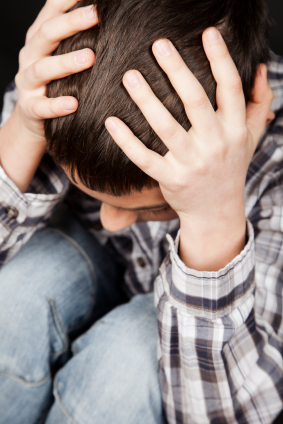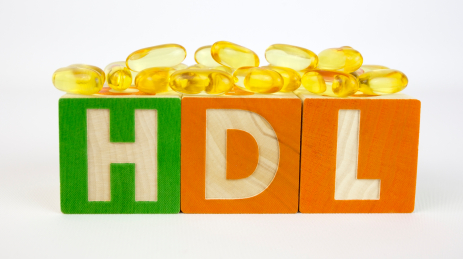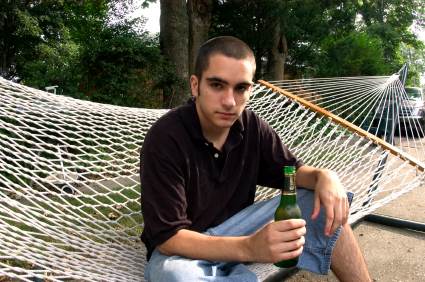Earlier Age of Onset of Bipolar Illness in the US Compared to Europe
 As we have previously reported in the BNN, the Bipolar Collaborative Network (including this editor Robert M. Post) found that patients from 4 sites in the United States had significantly earlier ages of onset of their bipolar illness compared to 3 sites in the Netherlands and Germany). These findings have been replicated by Frank Bellivier et al., who used a broader sample of European participants.
As we have previously reported in the BNN, the Bipolar Collaborative Network (including this editor Robert M. Post) found that patients from 4 sites in the United States had significantly earlier ages of onset of their bipolar illness compared to 3 sites in the Netherlands and Germany). These findings have been replicated by Frank Bellivier et al., who used a broader sample of European participants.
Bellivier’s research group studied two large samples of bipolar I patients from the US (n= 2275) and from 14 countries in Europe (n= 3616). The researchers found 3 different distributions of age of onset, and patients from the US had a greater representation in the early age of onset subgroup. Sixty-three percent of the sample from the US fell into the early-onset group versus 25% of those from Europe. The mean age of onset of the early-onset subgroup was significantly lower in the US sample (14.5 +/- 4.9 years) than in the European sample (19 +/- 2.7 years).
Editor’s Note: It is time that we took these geographical differences in the frequency of early age of onset of bipolar disorder seriously. While some controversy has surrounded the diagnosis of bipolar illness in children, it becomes increasingly important to recognize that this bona fide, well-diagnosed illness is more common in children from the US than from many other countries. Affected children should have careful clinical evaluation and, if the diagnosis warrants, definitive treatment. This should include both psychoeducational approaches; focused psychotherapies, including the family-focused therapy pioneered by Dave Miklowitz; and psychopharmacological intervention. When this kind of combined treatment is implemented, young patients who are treated with lithium, another mood stabilizer, or an atypical antipsychotic do much better than those who do not receive these consensus-based treatments.
Treatment algorithms for children of different ages with bipolar disorder are still being developed. However, it appears that in young and very young children, the atypical antipsychotics are often more effective than lithium or valproate monotherapy, as suggested in recent large randomized clinical trials. Initiating appropriate treatment is extremely important, since the duration of the untreated interval (that is, the time from illness onset to first treatment) is directly related to worse outcomes in adulthood. The longer the duration of untreated illness, the greater the severity of depression, the longer the duration of depression, and the greater the number of episodes an adult experiences.
As might be expected from the earlier age of onset of bipolar disorder, US patients also have a higher incidence of the major vulnerability factors for early onset—more genetic vulnerability (parents with bipolar disorder), more childhood stressors, and more stressors in the year prior to illness onset. Patients from the US also had a variety of other poor prognosis factors, including a higher degree of anxiety comorbidity, alcohol and substance abuse problems, a higher incidence of having more than 20 episodes over their lifetime, and a higher incidence of rapid cycling. All of these characteristics combine to produce worse outcomes in adult patients from the US compared to those from Europe. Earlier and more judicious treatment of the illness in the United States is needed to help ward off this more pernicious course of bipolar illness.
Sunlight Could Be a Geographic Risk Factor for Pediatric-Onset Bipolar Disorder
 A number of factors appear to be associated with age of onset of bipolar disorder. Several studies have replicated the finding that those who experienced some adversity in childhood and who have a parent or parents with bipolar disorder are at increased risk for earlier onset of the illness. These risk factors are more prevalent in the US than in many western European countries, and considerable data support the observation that the age of onset of bipolar illness is earlier in the United States than in several European countries. However, childhood onsets of the illness are prevalent in Turkey and in Norway.
A number of factors appear to be associated with age of onset of bipolar disorder. Several studies have replicated the finding that those who experienced some adversity in childhood and who have a parent or parents with bipolar disorder are at increased risk for earlier onset of the illness. These risk factors are more prevalent in the US than in many western European countries, and considerable data support the observation that the age of onset of bipolar illness is earlier in the United States than in several European countries. However, childhood onsets of the illness are prevalent in Turkey and in Norway.
Researcher Mike Bauer raises another possibility in an abstract presented at the 5th Biennial Conference of the International Society for Bipolar Disorders. He examined the association between age of onset and sunlight in the environment in 24 different sites in 13 different countries. Solar insolation refers to the amount of electromagnetic energy striking the surface of the earth. Bauer found that larger springtime maximum monthly increases in solar insolation were associated with younger ages of onset of bipolar disorder (p= 0.006). These calculations were derived from NASA Surface Meteorology and Solar Energy databases for each location. The largest maximum monthly increases in solar insolation occurred in varied climates, including in Norway, Chile, and arid parts of California.
The Unfolding Story of Poor Response to Antidepressants in Bipolar Depression
The role of the traditional antidepressants in the treatment of depression in bipolar illness remains controversial. Despite mounting evidence that they are not efficacious in the treatment of bipolar depression, they are still among the most widely used treatments for that condition. At the first biennial conference of the International Society for Bipolar Disorders held in Istanbul this past March, Mark A. Frye and Shigenobu Kanba chaired a symposium on antidepressant-induced mania and individualized treatment for bipolar depression.
This editor (Robert M. Post) discussed factors influencing antidepressants’ effects on patients with bipolar depression. In a recent meta-analysis, researchers Sidor and MacQueen reviewed data from studies encompassing 2373 patients with bipolar depression and found that antidepressants had no significant benefits over placebo on measures of response or remission. Pooled estimates for a thousand patients showed no increase in patients’ risk of switching into mania after treating with antidepressants. However, in a smaller sub-analysis, the risks of switching into mania following treatment with the older tricyclic antidepressants (43%) and venlafaxine (15%) was greater than the risk of switching after being treated with SSRIs (7%) or bupropion (5%).
There is a conundrum in the literature. While antidepressants don’t work very well in bipolar depression, there is a small subgroup of patients who, having responded well to antidepressants for two months, benefit more from continuing the antidepressant treatment than from discontinuing the drug. Continued treatment with adjunctive antidepressants (added to regular treatment with a mood stabilizer or an atypical antipsychotic) was associated with fewer relapses into depression over the next year when the antidepressants were continued compared to when they were discontinued. Lori Altshuler et al. have published two uncontrolled studies to this effect, Russell Joffe et al. have published one, and a more recent randomized study of this by Nassir Ghaemi replicated some of the results in patients who had non-rapid-cycling bipolar disorder. At the same time, the literature shows that there are number of risk factors for switching into hypomania during antidepressant treatment in bipolar depression.
Risk factors for switching into mania upon treatment with an antidepressant include: younger age, bipolar I compared to bipolar II, rapid cycling in the past year, mixed depression, use of older tricyclic antidepressants compared to newer second-generation antidepressants, use of noradrenergic active antidepressants compared to those that act on serotonin or dopamine, and a history of substance abuse. Read more
When Added to Valproate, Memantine Increased HDLs (“Good” Cholesterol) But Did Not Enhance Effectiveness of Treatment
R.B. Lu and S.Y. Lee reported in a poster at the 5th Biennial Conference of the International Society for Bipolar Disorders in 2012 that adding memantine (Namenda) to treatment with valproate (Depakote) was associated with increases in high-density lipoproteins (HDLs) or “good” cholesterol in bipolar II depressed patients. However, the combination was no more clinically effective than valproate alone in treating the patients’ bipolar illness, as had been hoped.
Editor’s Note: These data on memantine’s failure to improve patients’ bipolar illness when used as an adjunct to valproate contrast with those of Amit Anand et al., who reported in 2012 that memantine was a partially successful adjunctive treatment when added to ongoing treatment with lamotrigine. This combination of lamotrigine plus memantine was associated with faster and more robust antidepressant effects than the combination of lamotrigine plus placebo in patients with bipolar depression. This effect was significant in the first four weeks of the study as the dose of memantine was slowly increased from 5mg/day to 20mg/day, but not over the last four weeks of treatment at 20 mg/day.
The data of Anand et al. makes theoretical sense. Since lamotrigine inhibits the release of glutamate and memantine inhibits the actions of glutamate at the NMDA receptor, the two together might produce additive decrements in glutamatergic actions through two different mechanisms. In contrast, valproate is more closely associated with increases in GABAergic mechanisms, and this may explain why its effects on bipolar disorder were not improved by the addition of memantine.
High Sustained Success Rate With Adjunctive Memantine (Namenda) in Treatment-Resistant Bipolar Disorder
Koukopoulos et al. published a study of the anti-Alzheimer’s drug memantine in the Journal of Affective Disorders in 2012. The study of memantine (10-30mg/day) as an add-on to patients’ regular treatment for highly treatment-resistant bipolar disorder was open (i.e. not blind, randomized or placebo-controlled), but it deserves careful attention for its noteworthy results. Of the 40 patients in the study, who had been severely ill for long periods of time, 72.5% showed a rating of much or very much improved on the Clinical Global Impressions Scale for Bipolar Disorders (CGI-BP) after both 6 months and 12 months. Among rapid cyclers, 68.4% stabilized and remitted on memantine.
Editor’s Note: Memantine is an antagonist of glutamate NMDA receptors and is approved by the Federal Drug Administration (FDA) for the treatment of Alzheimer’s dementia, but not for other indications. Nonetheless, few (if any) drugs have this high a response rate in such a difficult-to-treat population, and the researchers suggest that even based on these preliminary data (which replicate their previous observations), careful clinical trials of memantine in individual patients would be worthy of consideration.
The data are so promising that fast-track development of this drug for FDA approval would be warranted. More formal randomized controlled clinical trials are needed.
We have written before about a few treatments that have rapid-onset antidepressant effects, including intravenous (IV) ketamine (at a dose of 0.5mg over 40 minutes). Ketamine works by blocking glutamate NMDA receptors, but the rapid antidepressant effects it produces (within 2 hours of treatment) last only 3 to 4 days. Given the similar mechanisms of action of ketamine and memantine and memantine’s high success rate in this study by Koukopoulos, it is plausible that treatment with memantine could extend the rapid onset effects of IV ketamine. However, this speculation has not yet been tested. At the very least, the similarity between the mechanisms of memantine and ketamine in blocking the glutamate NMDA receptor lends additional support to the clinical rationale for treating bipolar disorder with adjunctive memantine.
Treating Bipolar Depression in Youth
 At the Ryan Licht Sang pediatric bipolar conference in March, researcher Karen Dineen Wagner summarized the controlled data on treatment of bipolar depression in children. Almost no data exist, with the exception of one study in which quetiapine (Seroquel) was not found to be more effective than placebo.
At the Ryan Licht Sang pediatric bipolar conference in March, researcher Karen Dineen Wagner summarized the controlled data on treatment of bipolar depression in children. Almost no data exist, with the exception of one study in which quetiapine (Seroquel) was not found to be more effective than placebo.
Unlike mania, for which there are several approved treatments for children aged 10 to 17, there are no FDA-approved treatments for bipolar depression in children.
In adults, quetiapine is the only approved monotherapy for bipolar depression, and the only other approved treatment is the combination of fluoxetine and olanzapine. Despite the frequency with which conventional antidepressants (SSRIs, SNRIs, bupropion, and tricyclic antidepressants) are prescribed for bipolar depression, the data on their efficacy is mostly negative, based on a 2010 meta-analysis by researchers Sidor and MacQueen.
Given that there is little data available even for adults, Wagner reviewed the open (uncontrolled) studies on depression in children with bipolar disorder. Some evidence of good response to lithium or lamotrigine can be found in case series and chart reviews. In studies of atypical antipsychotics for mania in children, the mania rating scales used contain items about depression, and these often show some improvement.
Wagner concluded that one option is to use monotherapy with atypicals, lithium, or lamotrigine in children with bipolar depression.
Wagner created a revised Mood Disorder Questionnaire for Adolescents (MDQ-A), which focuses on a possible diagnosis of bipolar disorder instead of unipolar depression. This was published in the Journal of Clinical Psychiatry in 2006 and we have reproduced it here. Dr. Wagner indicated that the instrument is more valid when the answers are supplied by a parent than by the adolescent.
Editor’s Note: The lack of research on the treatment of children with bipolar disorder is a public health problem. Read more
New Data Support the Efficacy of Lurasidone for Bipolar Depression
In two recent clinical trials that were presented at the annual meeting of the American Psychiatric Association in May 2012, the atypical antipsychotic lurasidone (Latuda), which is currently used to treat schizophrenia, was associated with significant improvement in bipolar depression compared to placebo. The studies, known as PREVAIL (or Program to Evaluate the Antidepressant Impact of Lurasidone), assessed lurasidone’s efficacy as an adjunctive treatment and as a monotherapy.
PREVAIL 1 assessed lurasidone’s efficacy and safety when the drug was added to treatment with lithium or valproate in bipolar patients who became depressed. In this 6-week study, scores on the Montgomery-Asberg Depression Rating Scale (MADRS) improved significantly more in patients taking lurasidone (20 – 120mg/day; N=183) in addition to their mood stabilizer compared to those who received placebo (N=165) in addition to their mood stabilizer.
In PREVAIL 2, patients received lurasidone at either 20-60mg/day (N=166) or 80-120mg/day (N=169) or placebo (N=170) as a monotherapy for bipolar depression. As measured by MADRS scores, lurasidone was significantly more effective in improving bipolar depression than placebo was by the end of the 6-week study period.
In both studies lurasidone showed significant effects on other measures and endpoints including: improvement in Clinical Global Impressions severity of depression (CGI-BP-S) scores, reductions in anxiety symptoms, and improvement in social or occupational functioning. Lurasidone also produced higher rates of response (50% improvement on the MADRS). The CGI-BP-S improved in patients on lurasidone significantly more than in those on placebo as early as week one.
Editor’s Note: These two trials in bipolar depression suggest new possibilities for treating the depressed phase of bipolar disorder.
In studies of patients with schizophrenia, lurasidone has had an excellent safety and tolerability profile; it is relatively weight neutral and does not increase metabolic indices such cholesterol, triglycerides, or blood sugar.
Lurasidone also has an unusual mechanism of action, blocking serotonin 5HT 7 receptors, that may be related to its antidepressant effects. Antagonism of 5HT 7 receptors has been closely linked to antidepressant effects in studies of animal models of depression by two different investigators, Stephen Stahl and Herb Meltzer. It remains to be seen whether this or some other mechanism of lurasidone accounts for its antidepressant effects.
As we have noted before, since all antipsychotic drugs used in the treatment of schizophrenia (which block dopamine D2 receptors) also show efficacy in mania, it is likely that lurasidone will show the same effects. Studies of the drug in mania have not yet been presented. Lurasidone is not yet FDA-approved for bipolar depression, but the PREVAIL studies may be sufficient for an application for FDA approval of lurasidone for this additional indication.
Currently quetiapine (Seroquel) is the only monotherapy approved for bipolar depression. Studies of two other atypical antipsychotics, ziprasidone (Geodon) and aripiprazole (Abilify), failed to show efficacy in bipolar depression when compared with placebo. Ziprasidone’s effects were similar to those of placebo, while aripiprazole showed evidence of significant improvement in the first weeks of treatment compared to placebo, but these failed to last, perhaps because of overly high doses that led to a high drop-out rate.
Antidepressants used for the treatment of unipolar depression are not FDA-approved for bipolar depression and did not appear to be beneficial compared to placebo in recent meta-analyses by Sidor and MacQueen. These antidepressants include the selective serotonin reuptake inhibitors (SSRIs), mixed serotonin and norepinephrine reuptake inhibitors (SNRIs), the dopamine active drug bupropion, and the older tricyclic antidepressants. Not only are these antidepressants not effective in bipolar depression, but some (especially the tricyclics and the SNRIs) appear to increase risk of switching into mania.
None of the mood stabilizers are FDA-approved for bipolar depression; these include lithium, valproate, carbamazepine, and lamotrigine. Thus, quetiapine has had the unique position of being FDA-approved to treat both phases of bipolar disorder—mania and depression—and for prevention of both mania and depression when used as an adjunct to lithium or valproate.
If the lurasidone data lead to FDA approval of this drug as a monotherapy, it will be only the second monotherapy (after quetiapine) approved for bipolar depression. (The combination of olanzapine and fluoxetine is also approved for this indication.) Since bipolar depression can take a serious toll on patients’ health, cognition, and life expectancy, the prospect of having another effective drug for this phase of the illness is especially promising.
The Explosive Combination of Bipolar Disorder and Substance Abuse
At the 2012 annual meeting on pediatric bipolar disorder sponsored by the Ryan Licht Sang Foundation and Massachusetts General Hospital, Timothy E. Wilens gave a plenary talk on “The Explosive Combination of Bipolar and Substance Abuse.”
Wilens cited the statistic that 10% of adolescents in the general US population have at some time received a diagnosis of a substance abuse disorder. The age of onset of substance abuse peaks between ages 15 and 20.
Wilens said that in a recent survey about use in the past month, among participants in the general population aged 12 or higher with substance use, about 50% use marijuana and about 50% use prescription narcotics (often obtained from their parents’ medicine chest).
The rate of mortality from substance abuse has risen dramatically since 1993 and now approximates that from automobile accidents. According to Wilens, rates of emergency room visits and fatalities have increased recently, and this has been linked to opiate overdoses.
Adolescents with bipolar disorder are at greatly increased risk of substance abuse compared to the general population. Most substance abuse follows the onset of bipolar disorder, not vice versa.
Wilens cited the data of researcher Ben Goldstein that on 8-year follow up, 32% of bipolar adolescents developed a substance use disorder. Those treated with antimanic agents were much less likely to develop a substance use disorder. MORAL: Treat bipolar disorder psychopathology in adolescents well and help them avoid substance abuse.
Children with persistent emotion dysregulation were: 1) more likely to develop a substance use disorder; 2) more likely to begin using substances earlier; and 3) more likely to have a more severe form of combined (multiple) substance use disorders.
Treating Substance Use
Wilen suggested that a good interview is better than urine toxicology screens for assessing substance use. He suggested the following treatment paradigm: Read more
Bipolar Disorder and Its Comorbidities in Youth
A symposium on bipolar disorder and its comorbidities in children and adolescents was held at the annual meeting of the American Academy of Child and Adolescent Psychiatry in 2011. The following findings were reported there.
ADHD
Researcher Janet Wozniak discussed the relationship of bipolar illness and attention deficit hyperactivity disorder (ADHD). Based on interviews of family members of children with bipolar illness alone, bipolar illness plus ADHD, ADHD alone, and controls, she concluded that bipolar illness occurred more often in families of children with bipolar illness with or without ADHD. Similarly, she showed that there was more ADHD in relatives of children with either ADHD alone or ADHD comorbid with bipolar illness. She concluded that the comorbidity of bipolar illness and ADHD is a unique subtype of bipolar disorder and requires further study.
Emotional Dysregulation and Substance Abuse
In another presentation, Tim Wilens indicated that those with bipolar disorder and emotional dysregulation had an 8- to 20-fold increased risk of having a substance abuse comorbidity with their bipolar disorder.
Substance Abuse Comorbidity
In a third presentation, Ben Goldstein reported that the onset of bipolar illness predates the onset of substance abuse in 60 to 83% of instances of comorbid illness. He emphasized the dramatic negative impact of comorbid substance use in children with bipolar disorder in terms of increasing legal entanglements, pregnancy, academic failure, suicide, and decreased compliance with medications. He reported that in the multi-site, National Institute of Mental Health (NIMH)-funded Course and Outcome of Bipolar Illness in Youth (COBY) study, the largest longitudinal study to date of youth with bipolar disorder, the risk of new onset substance abuse over the course of 4 years of follow-up was 32%. These data taken with the 15% of children who already had substance abuse at intake indicates that in this study approximately half of the children with bipolar illness had or acquired a substance abuse problem near the beginning of their illness. Two-thirds of the children in the study had abused both alcohol and cannabis. Read more
Obesity and Bipolar Disorder: News from the American Academy of Child and Adolescent Psychiatry
 At the annual meeting of the American Academy of Child and Adolescent Psychiatry in Toronto in October 2011, a symposium on the impact of obesity on the course of childhood onset bipolar illness was held.
At the annual meeting of the American Academy of Child and Adolescent Psychiatry in Toronto in October 2011, a symposium on the impact of obesity on the course of childhood onset bipolar illness was held.
Typical Treatment of Bipolar Disorder in Youth
David Axelson described the typical outcome of bipolar illness and the medications used during naturalistic treatment. The data came from the large collaborative Course and Outcome of Bipolar Illness among Youth (COBY) study, in which he and his colleagues followed 255 patients with bipolar I disorder (BP I), 30 patients with bipolar II (BP II), and 153 patients with bipolar not otherwise specified (BP NOS) for a mean of 5 years. He discussed only BP I children at the symposium.
The study initially followed 270 BP I children for a mean of 582 weeks. They ranged in age from 7 to 17 years (average 14.4 years). Ninety-three percent of the children were treated with one or more antimanic (AM) agents. These included atypical antipsychotics (AA) in 77%, valproate or carbamazepine in 44%, and lithium in 47%. Antidepressants (ADs) were used in 46% of the children, stimulants in 43%, and benzodiazepines in 21%. Sixty percent had been on two classes of antimanic medications concurrently at some point.
A univariate analysis showed that older children received smaller amounts of antipsychotics and more anticonvulsants and lithium. Variables associated with better response, that is, a rating of either much or very much improved on the Clinical Global Impressions scale for bipolar disorder (CGI-BP), included older age and treatment with atypical antipsychotics. Those who had comorbid attention deficit hyperactivity disorder (ADHD) or psychosis at baseline did more poorly. Mean symptom scores were better when the children received any anti-manic treatment including an atypical or lithium, but worse when they received valproate or carbamazepine.
These data are similar to those from other prospective treatment outcome studies in childhood-onset bipolar I illness. Taken together they all suggest that the illness is difficult to treat and stabilize even when multiple medicines are used in combination.
Obesity and Mood Disorders in Youth
Another speaker, Ben Goldstein, indicated that in the scientific literature, obesity has been associated with a higher number of depressive episodes and longer length of depression, more recurrences of depression, more anxiety disorders, increased numbers of hospitalization, more suicide attempts, and worse functional outcomes. In the same group of patients discussed by Axelson above, 42% were overweight or obese, compared to a 34% incidence in the general population of children in this age range.
Factors associated with overweight included substance abuse, a history of physical abuse, prior hospitalization, and being on 2 or more medications. Those who were overweight or obese spent more time ill in a manic or depressive episode. Read more







